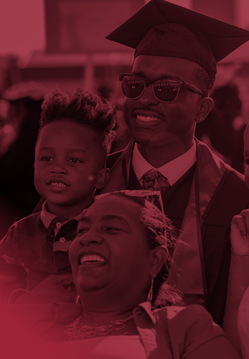UMass Global offers a wide variety of degree programs that fit your career goals. Explore your options and find a degree that fits you.

When the unemployment rate reaches a record low — as it recently did in the U.S. — most people would assume that’s a positive sign. It means the economy is continually strengthening and workers are seeing ample opportunities to land sustainable and fulfilling jobs, right?
The true effects of low unemployment aren’t quite so simple. In fact, there’s often so much happening beneath the surface that it can be confusing for most people to follow along. At least those of us who aren’t economic experts.
So, what does a record low unemployment rate really mean for American workers and business owners? While you may be accustomed to hearing about the positive impact on our economy, you’re probably less familiar with the potential downsides. Read on to learn about three negative impacts of low unemployment that are worth keeping in mind.
Negative Side Effects of Low Unemployment
In September 2019, unemployment rates in the U.S. hit a 50-year low. The country has generated millions of new jobs since the Great Recession, when unemployment reached its height at 10 percent. While this might typically be viewed as a success worth celebrating, some experts believe it’s possible for an unemployment rate to get too low. They typically cite three reasons.
1. Low Unemployment Makes Recruitment and Retention More Difficult
This first negative impact that can result from low unemployment is a bit more obvious than the others: When jobs are plentiful and more employees are finding stable work, the pool of candidates applying for open positions shrinks.
At the same time, organizations may see an increase in employee turnover when workers have ample opportunities at their fingertips. Simply put, employees can afford to be choosey when it comes to finding new positions that might better suit their wants and needs.
When there are more job openings than there are unemployed Americans, recruiters and hiring managers have an incredibly hard job. Some companies have even begun to pay candidates to attend an interview for a position they may not even secure. That pressure is felt at every level of an organization. In fact, the 2018 Conference Board CEO Study reveals that “failure to attract and retain top talent” is the number one issue on CEOs’ minds today.
Some call what we’re seeing in today’s job market a “war for talent” as organizations compete when it comes to benefits offerings and other perks that might attract candidates. They’re going far beyond increasing salary offerings.
To combat the hard-hitting impact low unemployment has on hiring and retention, employers might consider a number of different tactics, including:
- Highlighting a thriving and robust company culture
- Prioritizing work-life balance for employees
- Investing in employee education benefits
- Prioritizing professional development
- Promoting from within
2. Low Unemployment Often Results in Lost Productivity
Economists have determined that when unemployment reaches unprecedented lows, the labor market can reach a point where each additional job added doesn’t generate enough productivity to cover its cost. Every subsequent job will contribute to a scenario where what an economy actually produces diverges from what it has the potential to produce — known by many as the “output gap.”
The output gap rises and falls alongside the economy. In simple terms, a negative output gap means the economy’s resources are being underutilized. Conversely, a positive output gap means the market is over-utilizing resources, and the overall economy becomes inefficient.
Productivity can also take a hit if employers aren’t offering competitive wages in the midst of the tight labor market. This inevitably results in hiring teams filling vacancies with less-qualified candidates.
So, while there may be more jobs than there are people today, there aren’t enough workers with the requisite skills and experience to fill them. According to a recent Workday study, just 35 percent of employers feel their entry-level employees are ready to perform the duties expected of them. Recruiters may be creating jobs and hiring candidates, but the resulting skill gap means that organizations are getting less and less done per hour each day.
This can also result in overwhelmed and stressed employees. Often, the top performers in a particular company become overtasked in an attempt to fill the gap. The average full-time employee already works more than 8 hours per day — consider how that could increase for those picking up the slack.
3. Low Unemployment Could Mean Another Recession Is Coming
The last time we saw unemployment rates as low as they are today was in 1969, when President Richard Nixon was still in office. While unemployment fell to 3.5 percent in December 1969, it shot back up to 6.1 percent a year later. The conditions back then, many note, closely mirror what we’re seeing now. After a historically long economic expansion, the American economy fell into a recession — although a mild one.
According to CNBC, investing experts today are conflicted over what the current state of our economy means. Is it just getting started with such positive marks? Is it on its way to another mild slowdown? Or will it eventually lead to a much more severe downturn?
While time will ultimately tell, the hesitation to predict what’s coming is enough to give many business owners pause. In many ways, we’re still making up for the damage caused by the Great Recession that stretched from the early 2000s to the early 2010s — and the decades of wage stagnation that preceded it.
Many employers have become more risk-averse, not yet willing to meet today’s tight labor market with the necessary higher pay. In fact, September 2019 marked the first time in years that worker earnings decreased. This can contribute to many of the aforementioned difficulties related to hiring and retention in today’s overtasked workforce.
The Effects of Low Unemployment: Where Do We Go From Here?
Perhaps you’re interested in identifying some ways to potentially remedy the negative effects a historically low unemployment rate can have on your business. It’s worth considering the numerous ways your organization can differentiate itself from the pack. You may want to keep a few things in mind:
- Findings suggest that four in five employees prefer benefits and perks to a pay raise.
- Survey results reveal that nearly three in five people report benefits to be among their top considerations before accepting a new job.
With facts like these in mind, your path forward may become a bit clearer. One possible key to hiring and retaining qualified workers is to amplify your benefits offerings. To learn more about what this could look like in practice, visit our article, "How Employers Can Drive Success Through Professional Development Opportunities.”





